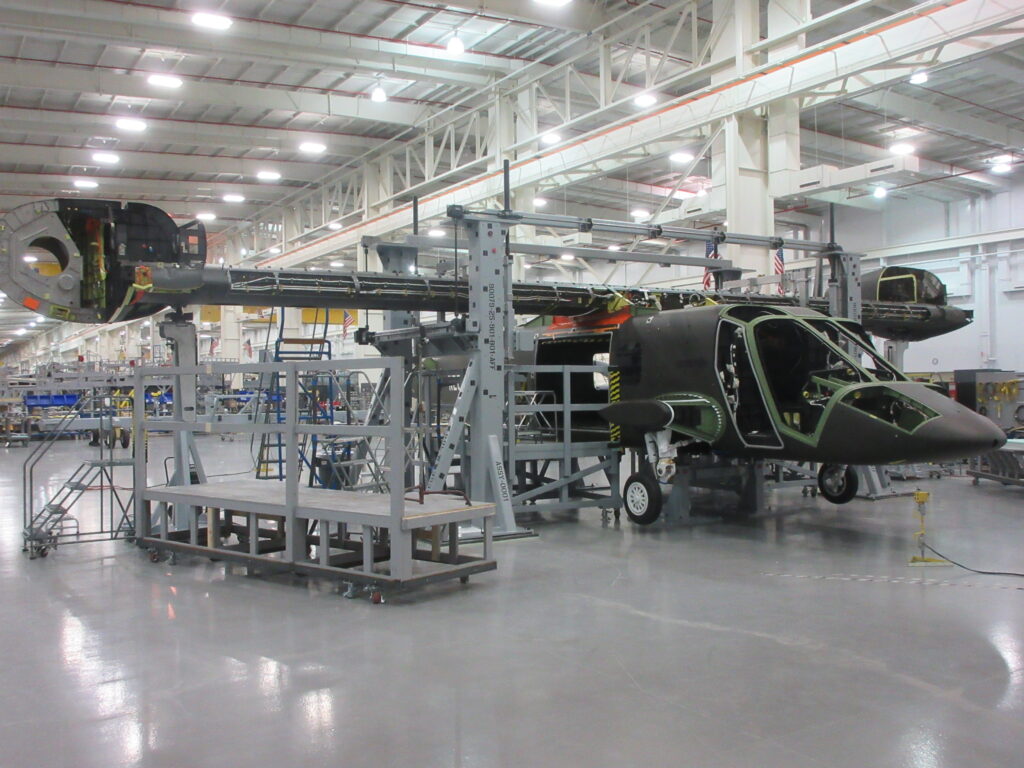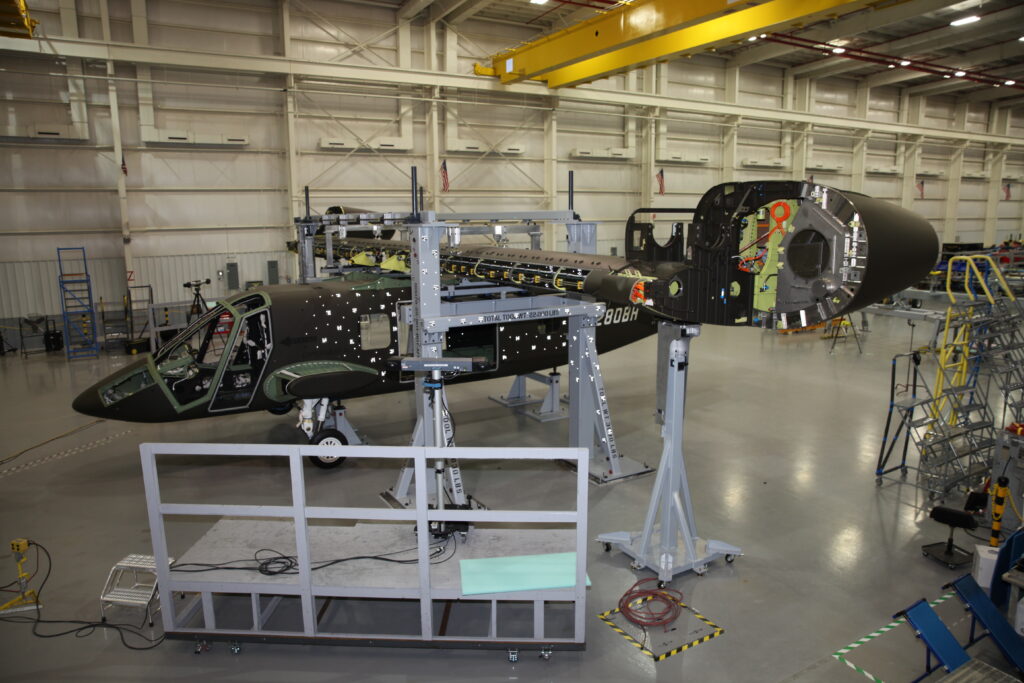
V-280 Valor
The future of tilt rotor aviation is taking shape, quite literally, at the Bell Helicopter factory in Fort Worth, where the company attached the wing of its prototype V-280 Valor to the fuselage. Now we can see in real life, not just computer drawings, what one vision for the military’s Future Vertical Lift aircraft will look like.
Bell’s V-280 and its rival, the Sikorsky-Boeing SB>1 Defiant, are supposed to take flight this year. But Sikorsky (now owned by Lockheed Martin) and Boeing haven’t been nearly as forthcoming about their aircraft as the publicity-savvy Bell.

Bell is offering a next-generation tilt-rotor, evolved from its V-22 Osprey, which tilts its huge rotor blades between vertical and horizontal positions to gain both the best features of a helicopter (vertical take off and landing) and those of a propeller plane (fuel-efficient speed for long range flight). My colleague Richard Whittle wrote extensively on the V-280’s technology and manufacturing a few weeks ago.
The Sikorsky-Boeing Defiant looks more like a traditional helicopter but is based on Sikorsky’s “X2” technique of combining two counter-rotating rotors, one on top of each other, with a pusher propeller at the tail. The smaller forerunner of the Defiant is the Sikorsky S-97 raider rolled out in 2014.
The two Joint Multi-Role (JMR) aircraft prototypes will show the military the art of the possible, so the Pentagon can formalize the requirements for an entire family of Future Vertical Lift aircraft to replace current helicopters across the four armed services.

China’s new H-20 stealth bomber ‘not really’ a concern for Pentagon, says intel official
“The thing with the H-20 is when you actually look at the system design, it’s probably nowhere near as good as US LO [low observable] platforms, particularly more advanced ones that we have coming down,” said a DoD intelligence official.


























